Biology > EXAM > ONS/ONCC Chemotherapy Immunotherapy Certificate QUESTIONS WITH COMPLETE SOLUTIONS (All)
ONS/ONCC Chemotherapy Immunotherapy Certificate QUESTIONS WITH COMPLETE SOLUTIONS
Document Content and Description Below
Lesson 1: Foundations to Set the Stage ... Focusing on Cellular Structure and Function ... 01:18 01:22 The Normal Cell Cycle -The cell cycle refers to the ordered seres of pro... cesses of DNA replication and mitosis, or cell division -Cell nucleus regulates these processes by gathering and processing complexes molecular information Interphase and Mitotic Phase Cell division produces two identical cells through these two major phases During interphase: Cell grows and DNA is replicated through the following three steps: 1: First growth phase (G1 or first gap) 2: Synthesis phase (S phase) 3:Mitotic Phse (M phase) First Growth Phase (G1 or first gap) -cells increase in size -reproduce RNA -"quality assurance" test that the cell will be ready to synthesis DNA -Length of time is variable, can be from hours to days Synthesis Phase (S phase) -DNA replicates -Results in the formation of identical pairs of DNA (chromatids) -which are attached a t the centromere -lasts 2-10 hours Mitotic Phase (M phase) -Replicated chromosomes are aligned, separated, and move into 2 new, identical daughter cells -takes about 30-60 minutes Major points of cell regulation are entry and exit from -G1 checkpoint -S Phase -G2 checkpoint -M phase Restriction Point -The transition from the resting phase into an actively dividing phase (G0-G1) is a point where cellular transformation can occur -During this time, cells pass through a transition phase known as a restriction point -Extracellular growth factors trigger reentry into G1, and GF are required to send the cells past the restriction point, or the point of no return G0 Phase (resting phase) -After mitosis, cells may enter back into the G1 phase or go into a resting phase, known as G0 -Most cells in the human body reside in G0 -Exceptions to this are those that are (Resting in G0 phase) -Exceptions to this are those that are metabollically active, such as -granulocytes -and the epithelium of the GI tract 00:02 01:22 Cell Cycling Time Amount of time from mitosis to mitosis Cell cycle video and image http://highered.mheducation.com/sites/0072495855/student_view0/chapter2/animation__how_the_cell_cycle_works.html Check points in the Cell Cycle: Keeping it All Under Control -The cell cycle is carefully controlled through a series of checkpoints -Variation in duplication or distribution of chromosomes during cell division can alter the genetic information passed on to daughter cells, leading to cellular dysfunction and disease, such as cancer -These checkpoints monitor for DNA integrity and control progression through mitosis Progression through the cell cycle is controlled through two proteins: 1. cyclines (D, E, A, B) 2. Cyclin-dependent kinases (CDKs) -Cyclin-CDK complex allows the cell to progress through each phase of the cell cycle Locations of proteins Cyclins (D, E, A, B) and CDKs -(G0-G1) : Cyclin D and CDK 4/6 -Early S: Cyclin E and CDK 1/2 -Late S: Cyclin A and CDK 1/2 -G2: CDK 1/2 and cyclin A -Before M: CDK 1 and Cyclin B Inhibitory proteins -prevent progression of the cycle when DNA damage is detected -An example of an inhibitory protein is p53 (AKA TP53) DNA Damage Checkpoints -If DNA damage is present, cells are programmed to stop dividing or undergo apoptosis (programmed cell death) -The retinoblastoma protein (Rb), p53, and p21 are some of the most well-understood inhibitory proteins (IP) Inhibitory proteins p53 -Levels of this IP regulate several important target genes -Will increase when DNA damage is present -Protects against inappropriate signal proliferation -sometimes called the "suicide gene" M Phase Checkpoints When the cells prepare to divide, the chromosomes line up in the mitotic spindle. If the chromosomes are not properly aligned, division is not allowed to continue Immunity ... Cells of the Immune System ... Pluripotent Stem Cell -The cells of the immune system are created in the bome marrow from what is know as a ___ -A stem cell that can differentiate into any cell type except for extraembryotic tissue, does not yet have a function Myeolid Precursor Cells Mature into: [Show More]
Last updated: 2 years ago
Preview 1 out of 25 pages
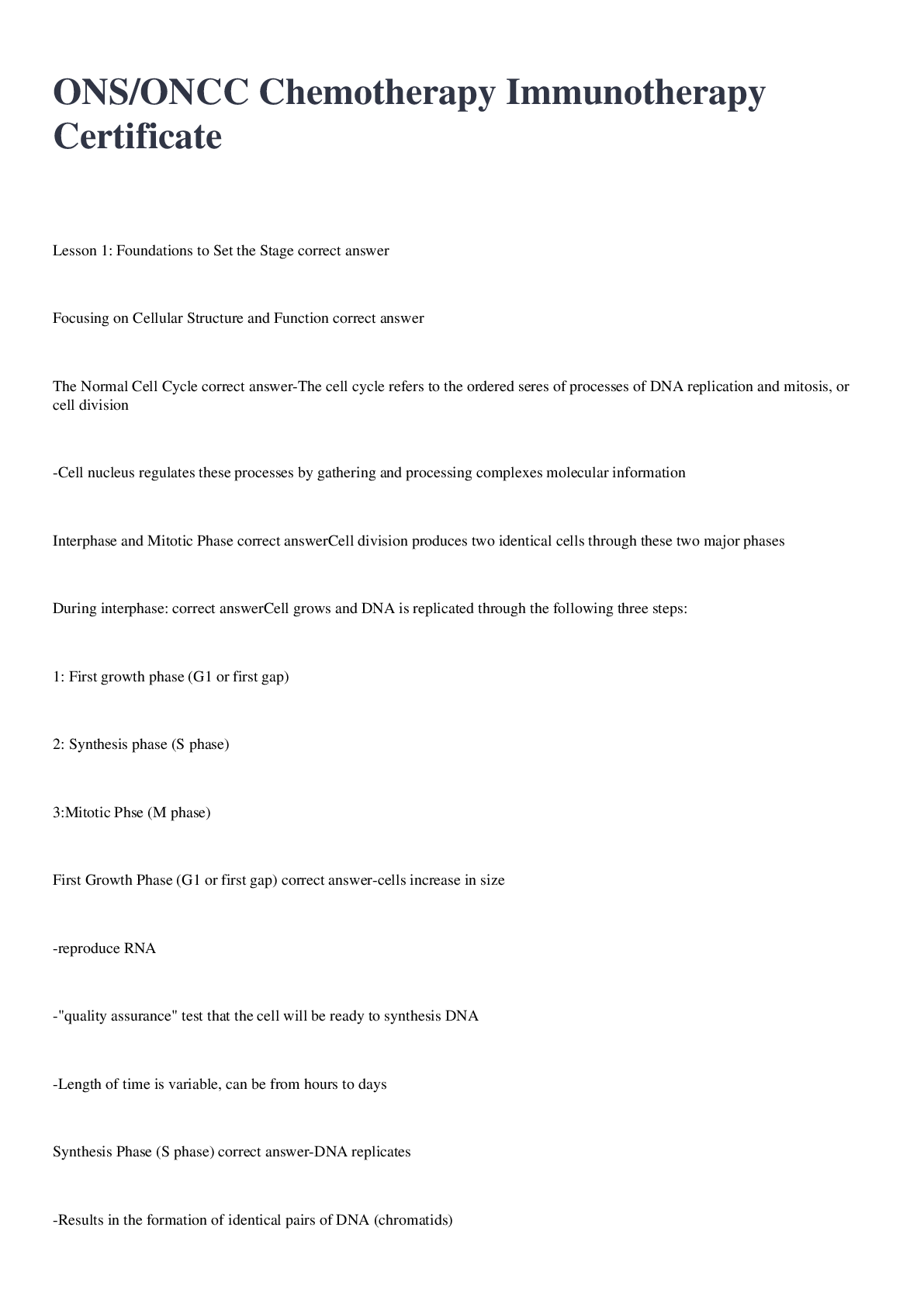
Buy this document to get the full access instantly
Instant Download Access after purchase
Buy NowInstant download
We Accept:

Reviews( 0 )
$13.00
Can't find what you want? Try our AI powered Search
Document information
Connected school, study & course
About the document
Uploaded On
Nov 17, 2022
Number of pages
25
Written in
Additional information
This document has been written for:
Uploaded
Nov 17, 2022
Downloads
0
Views
46

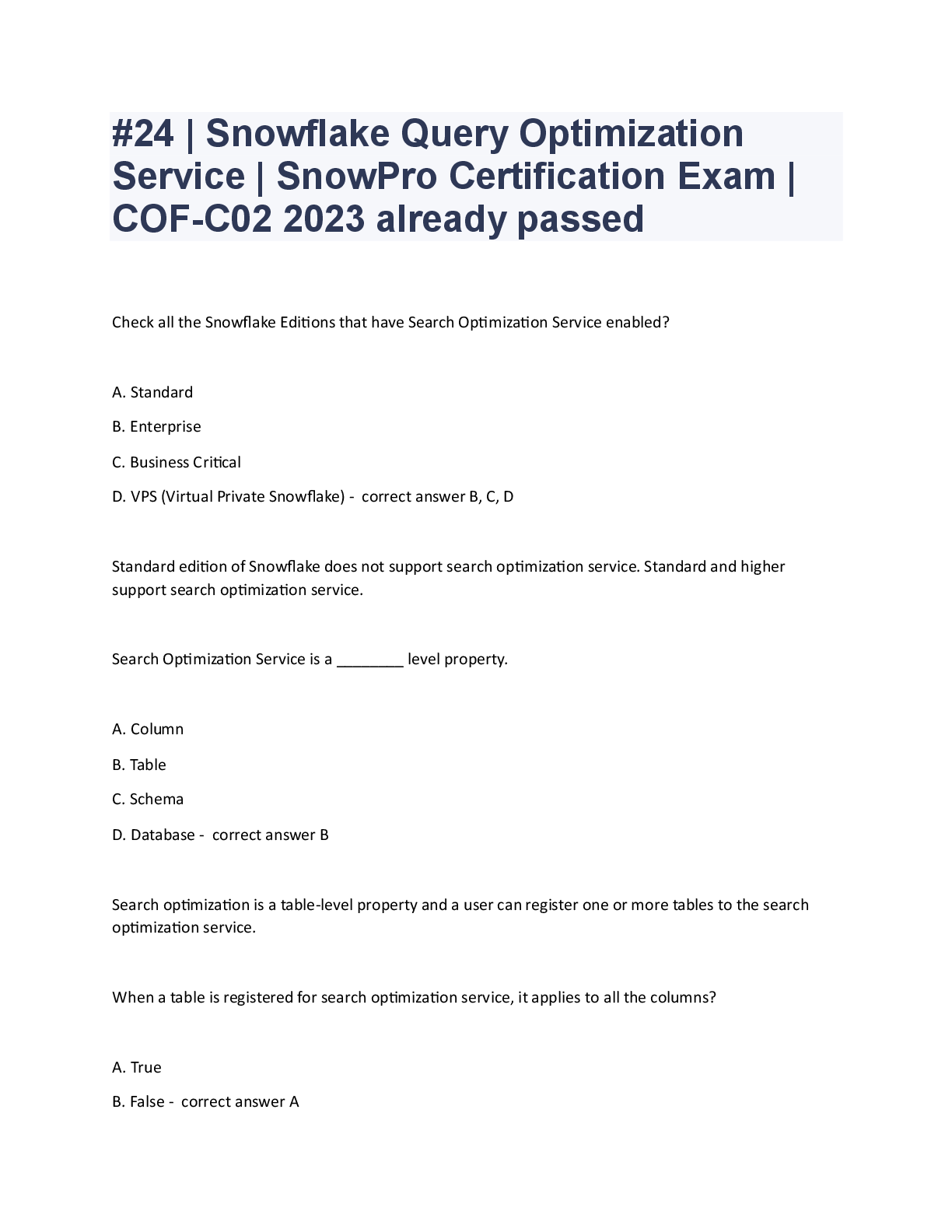



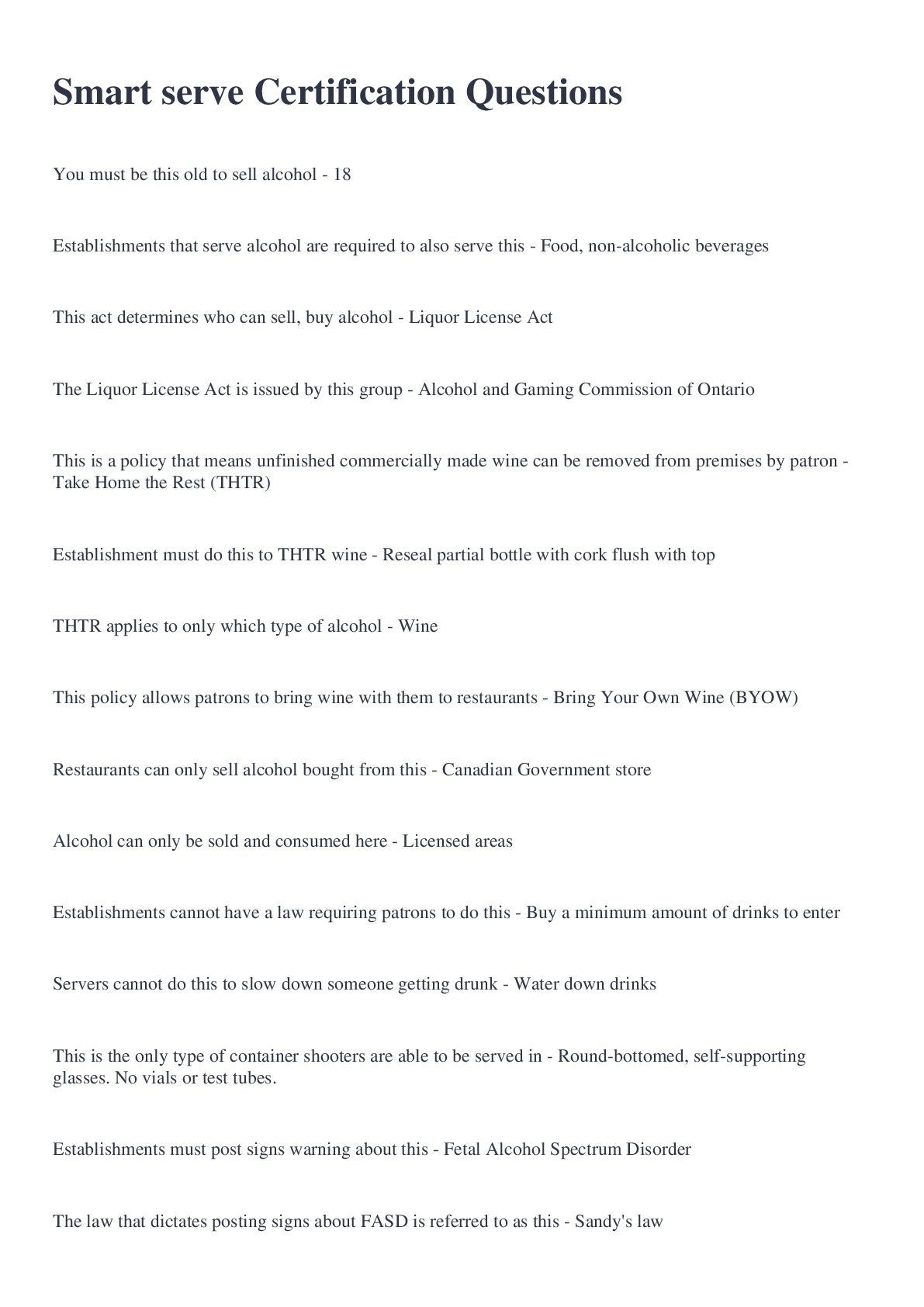
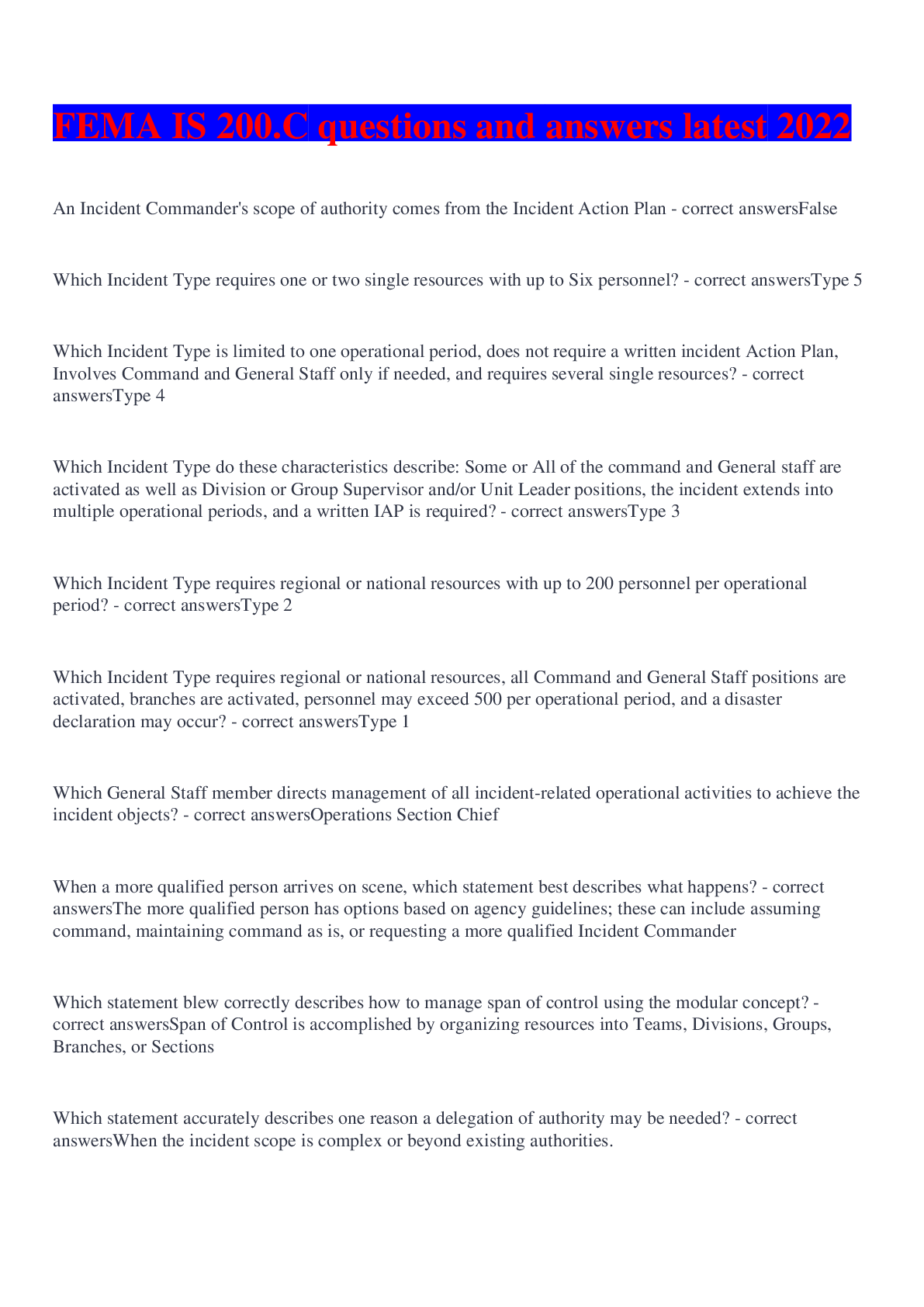
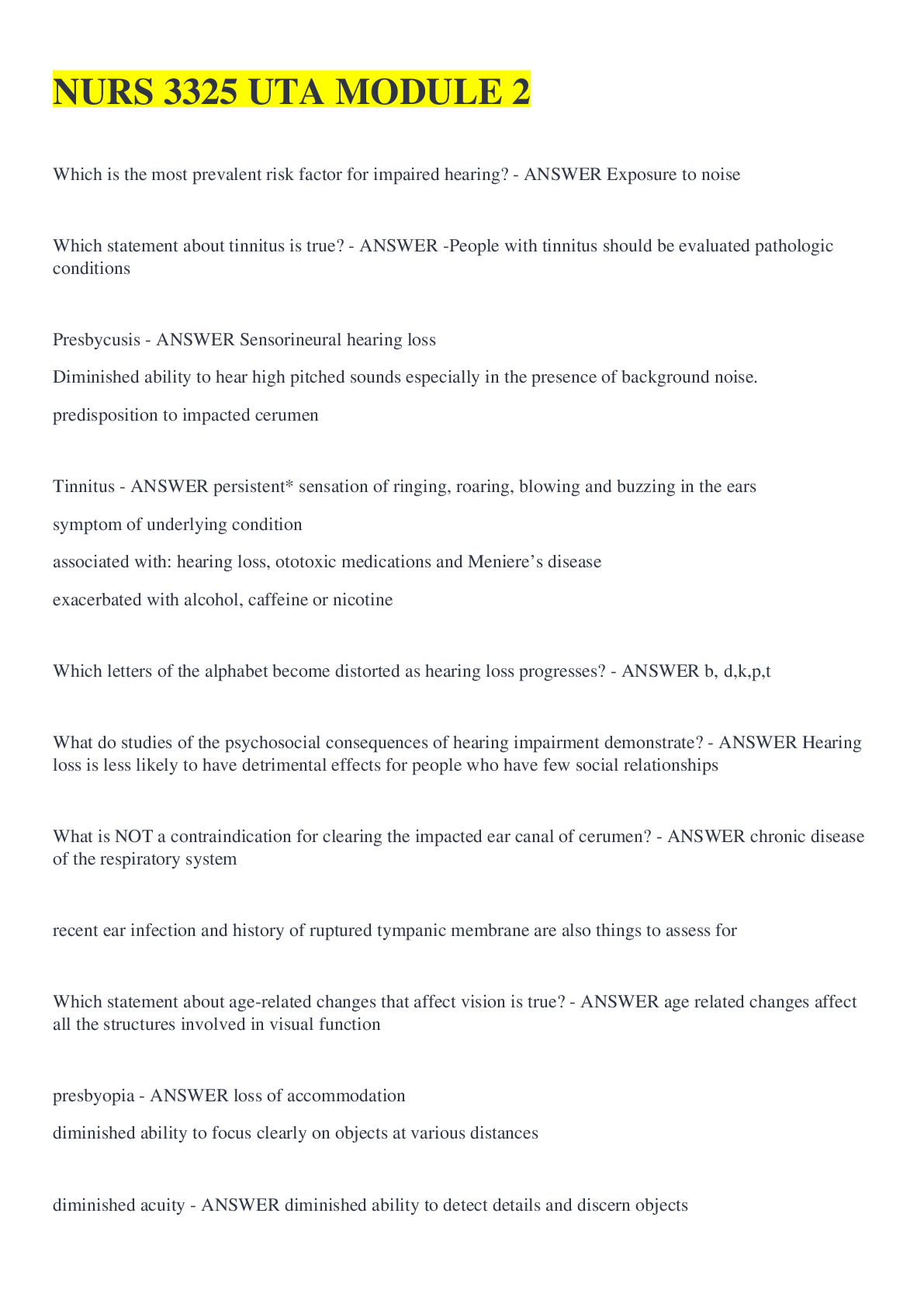

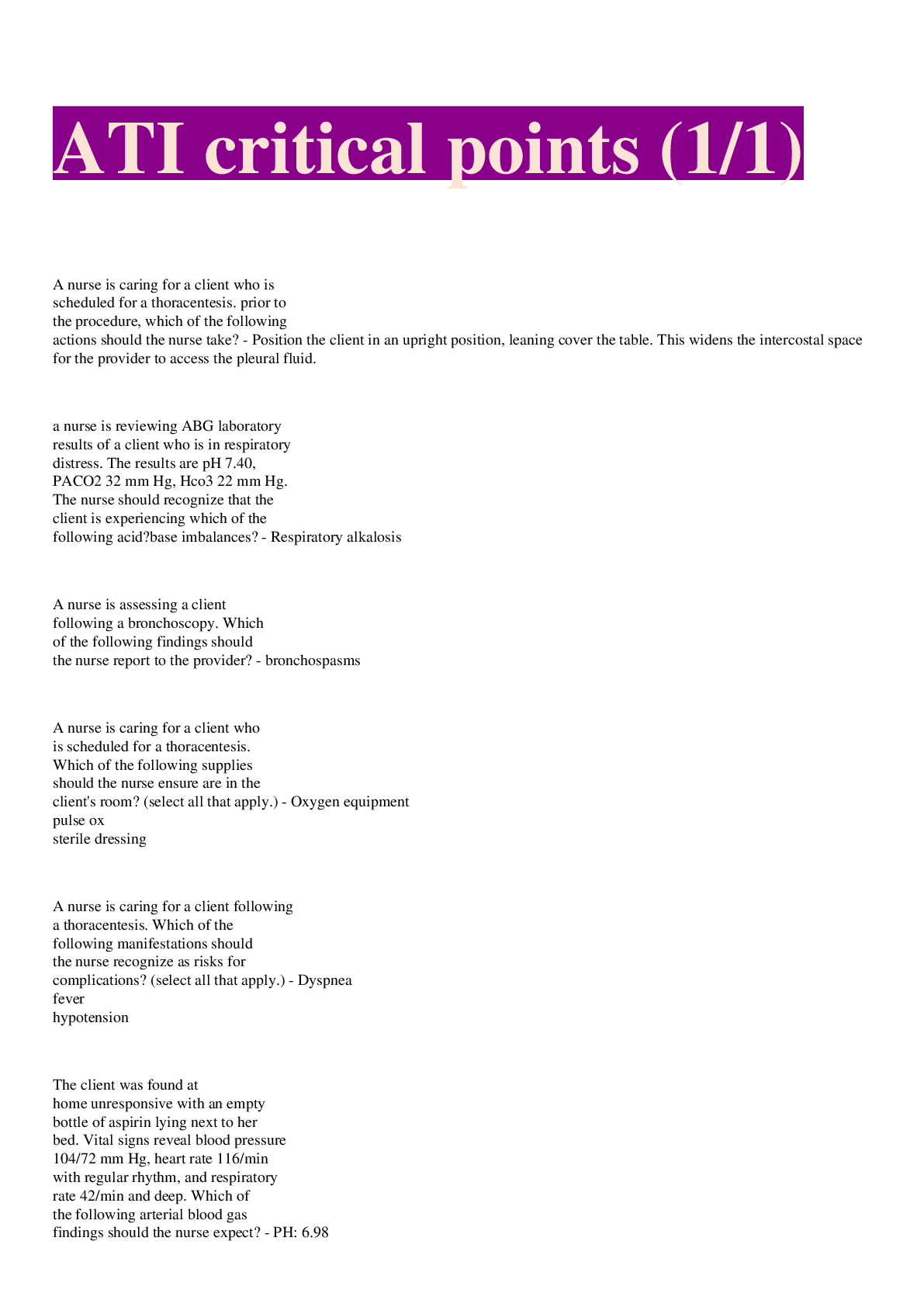
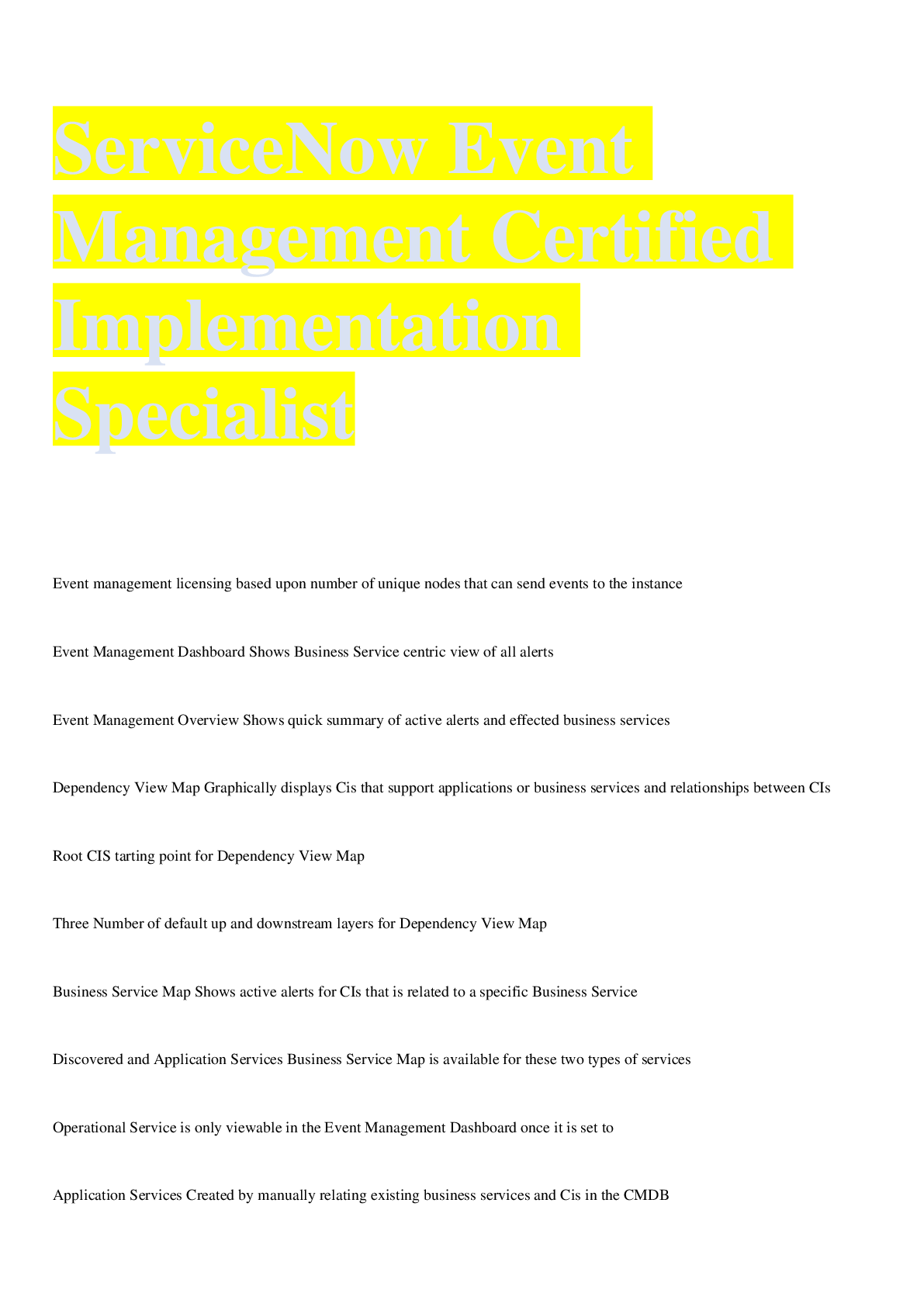
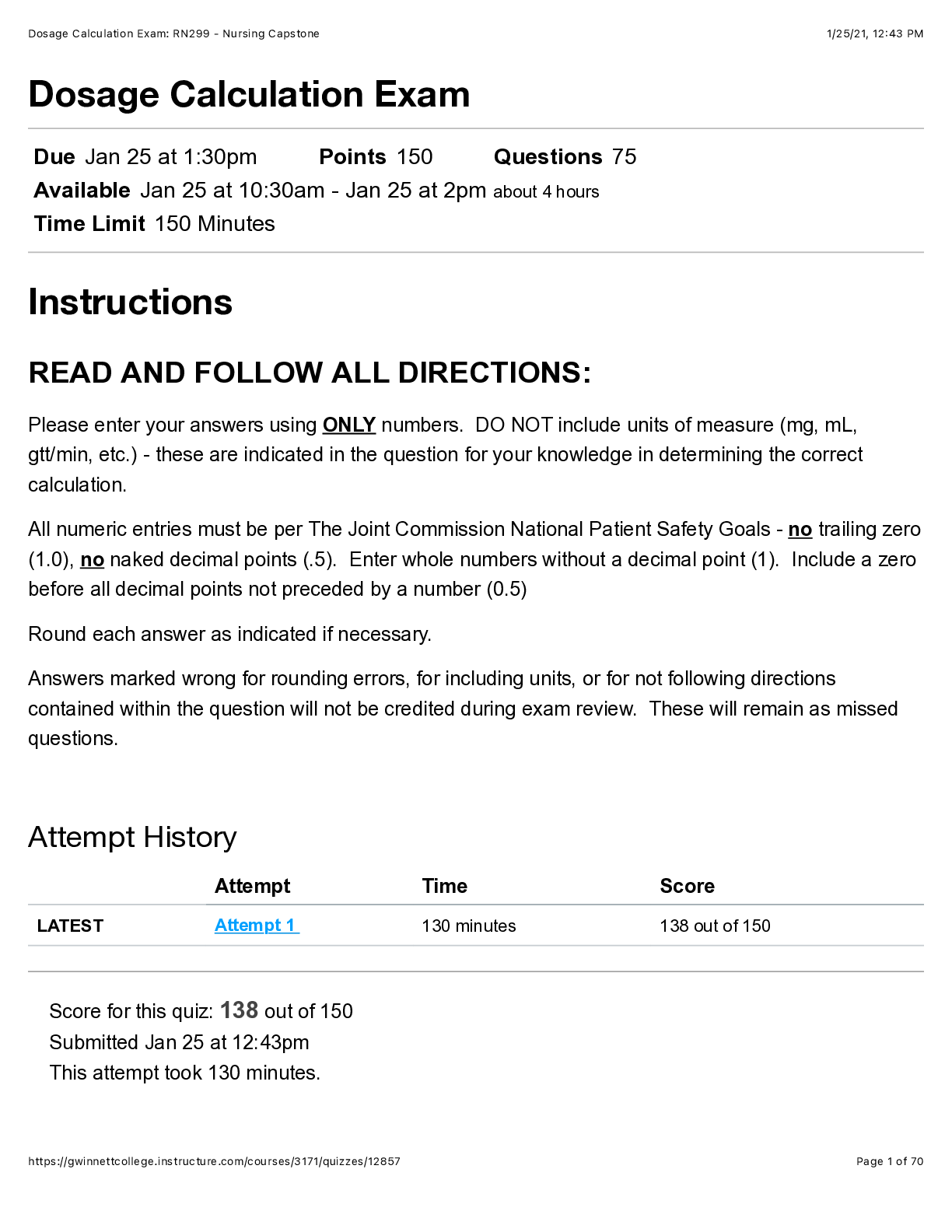
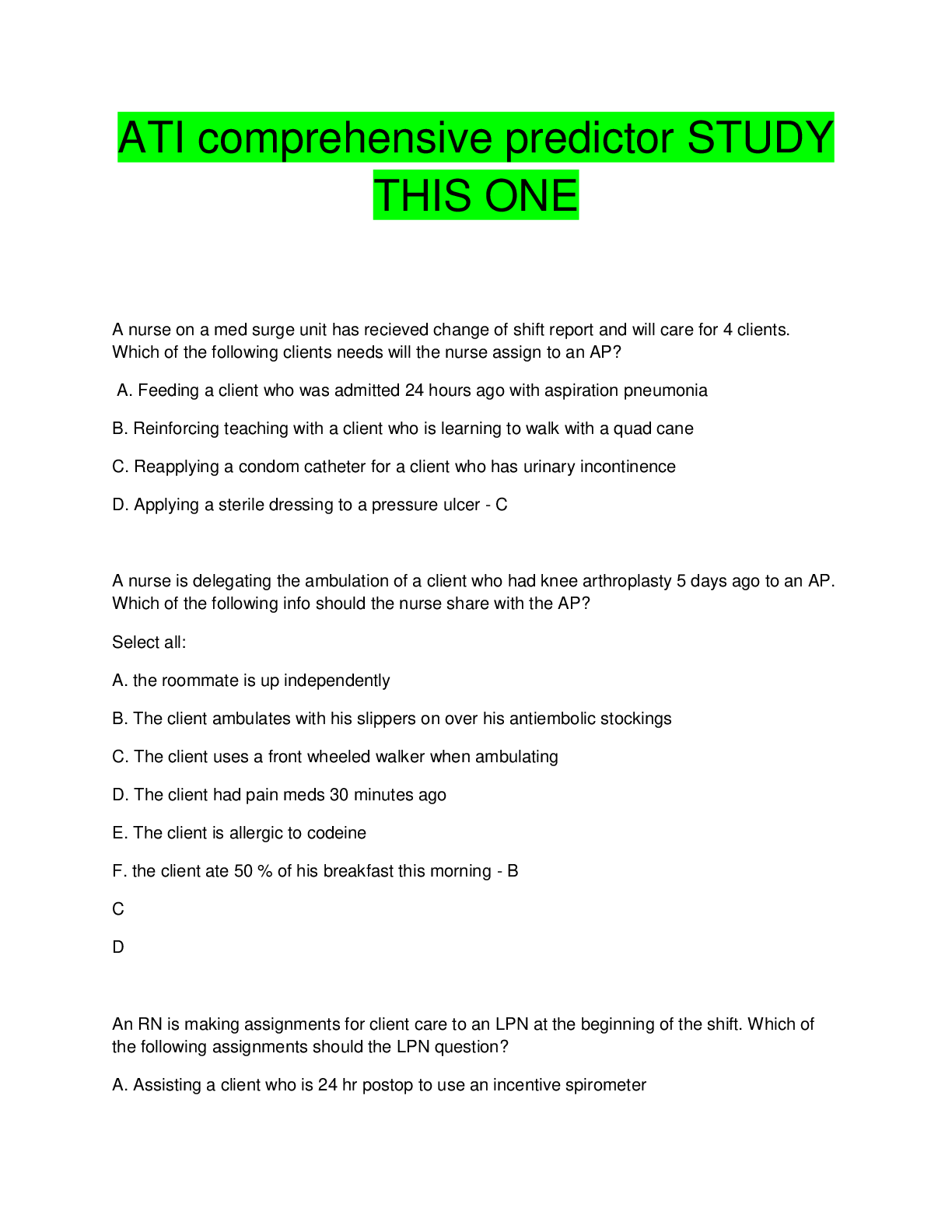
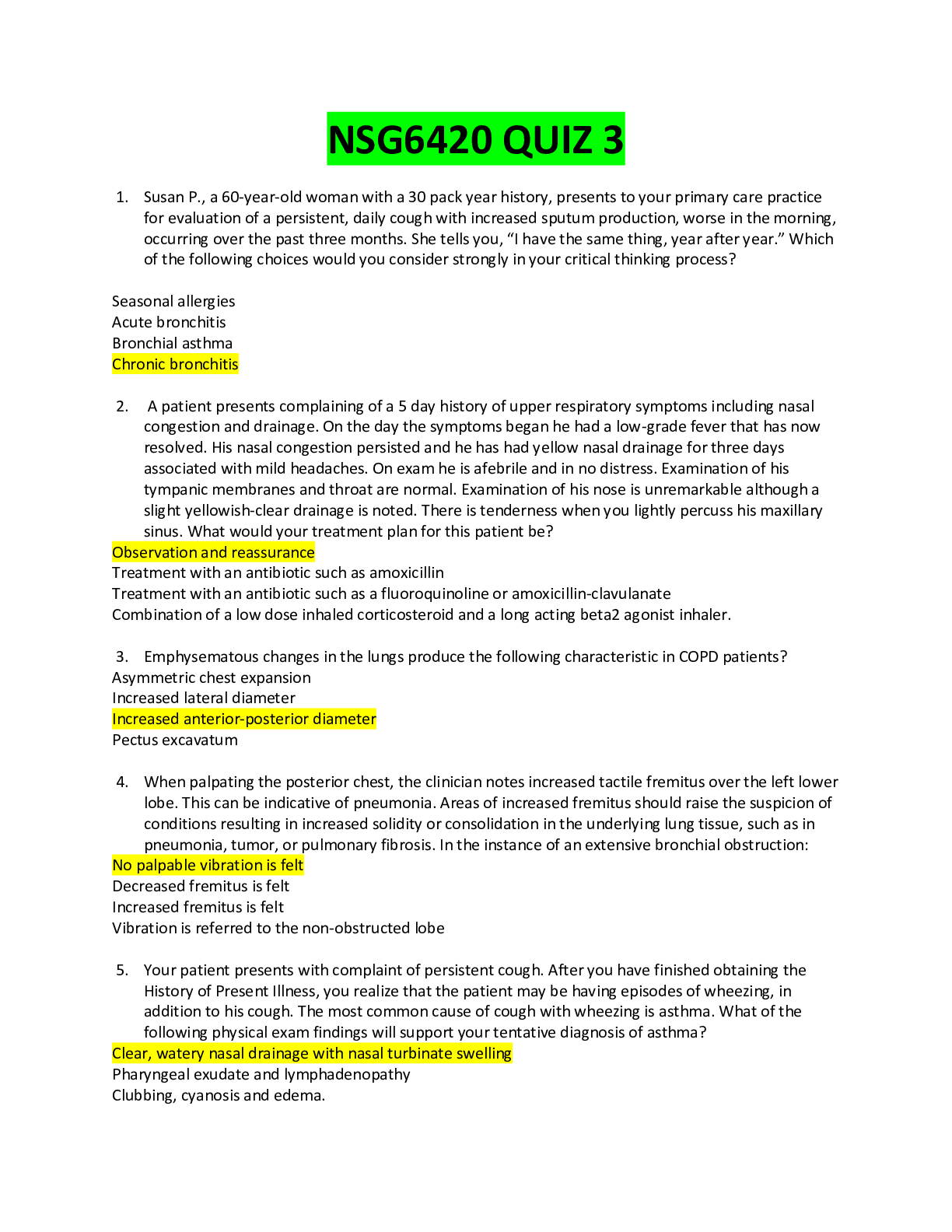

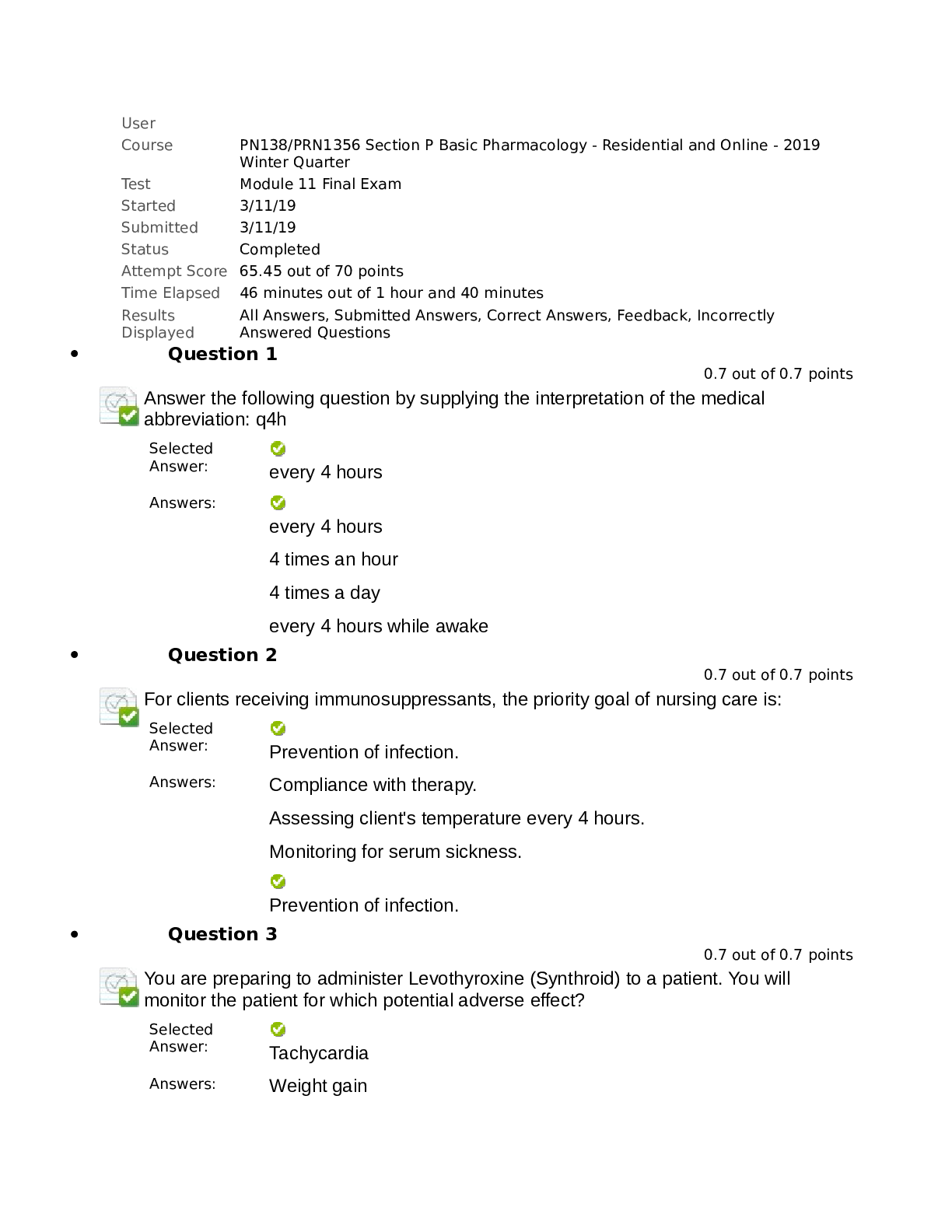
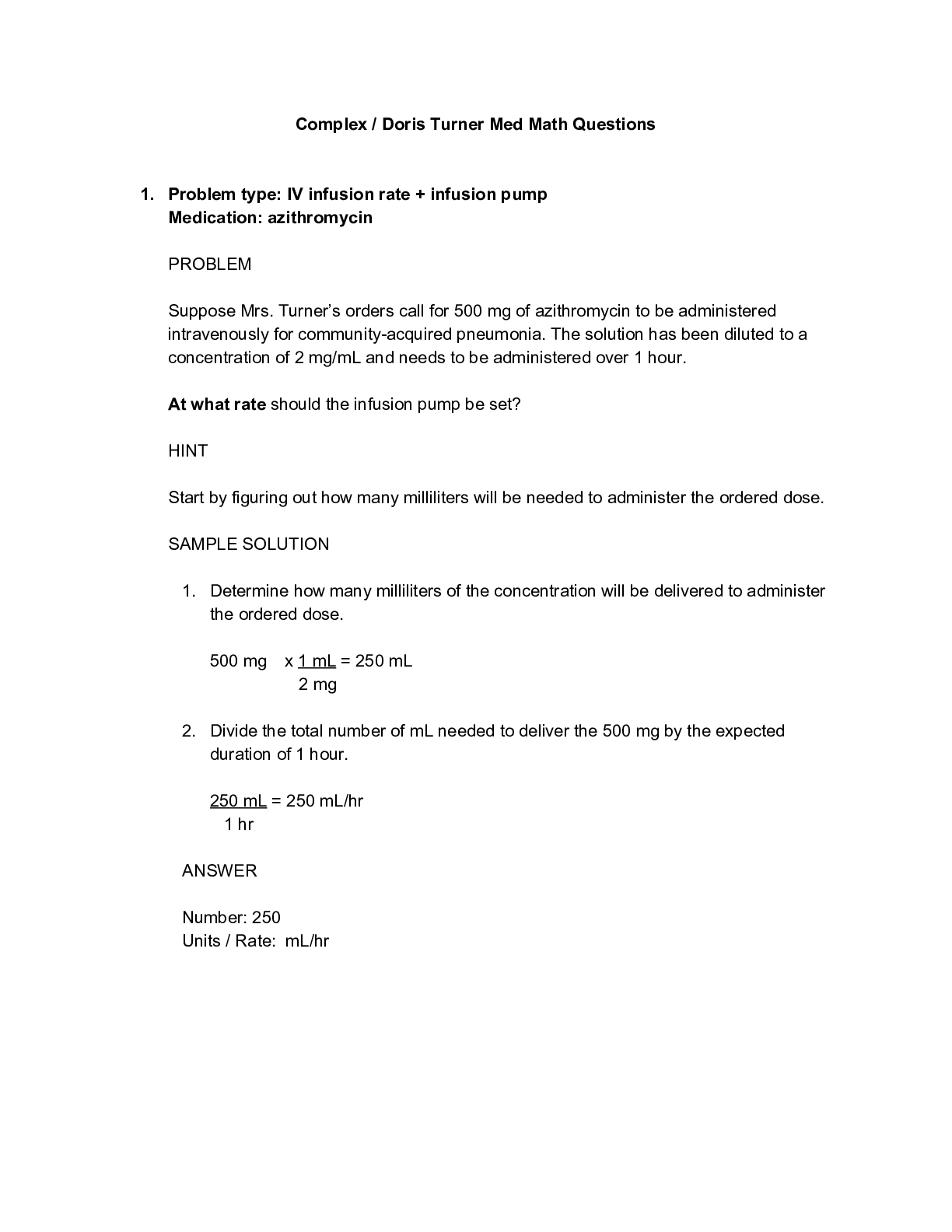






.png)

